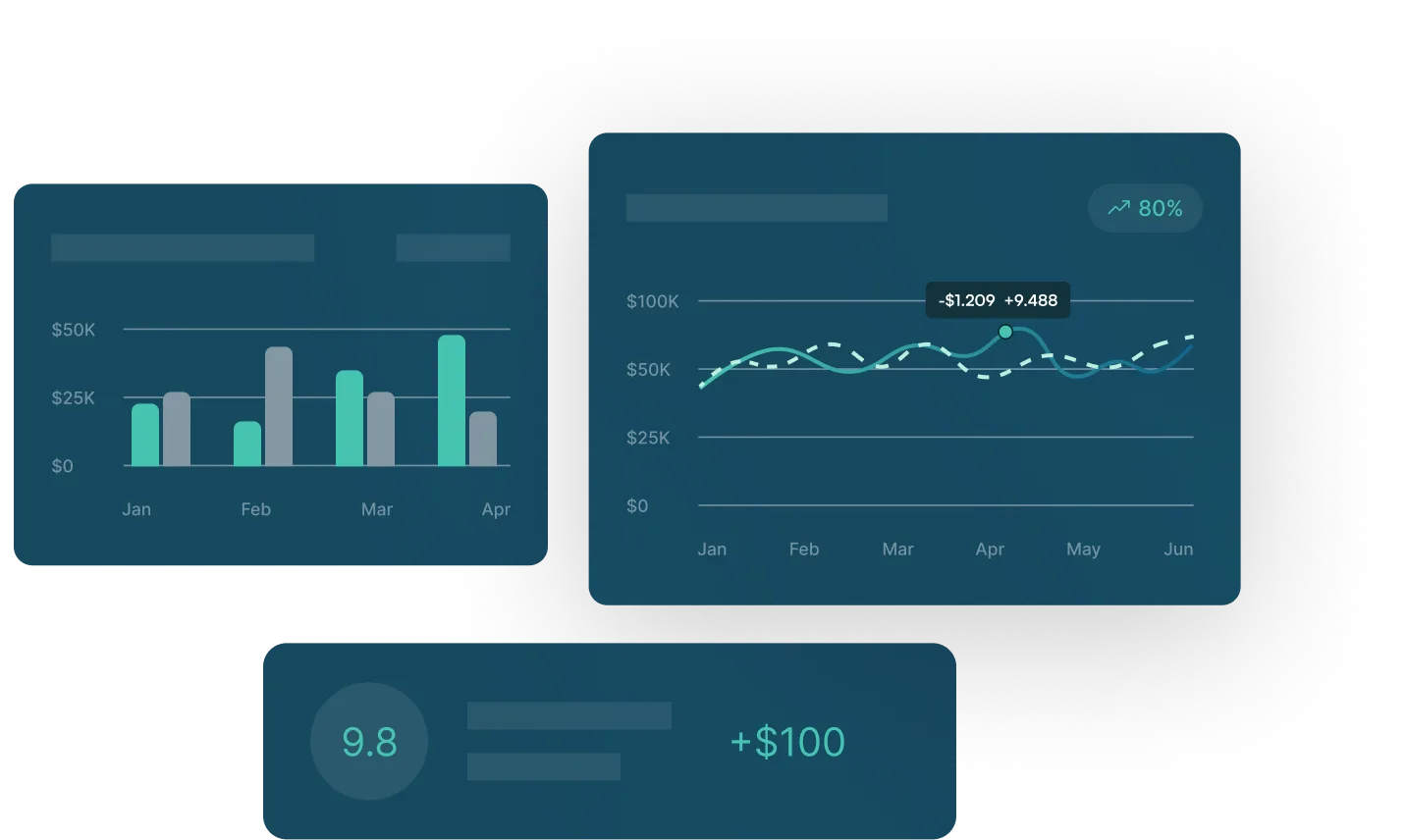How to Record Foreign Currency Transactions (& Identify FX Exposure)


A successful foreign currency hedge program starts with clean accounting results. However, foreign currency transactions can be tricky to record. In this blog, we explain three steps (with examples) to properly recording foreign currency transactions under ASC 830.
Thinking about starting or refining your FX hedge program? One of the first steps (after setting your objectives, of course) involves identifying and gathering exposures. And that starts with looking at foreign currency transactions that could be driving FX gains or losses, impacting your bottom line.
To understand foreign currency transactions, let’s first talk about the difference between foreign currency and functional currency.
Foreign Currency vs. Functional Currency
Before they can be recorded, foreign currency transactions need to be adjusted to today’s value in your company’s functional currency in a process known as re-measurement. Your functional currency is the currency in which you keep your books.
For example, a U.S.-based company’s functional currency would be the U.S. dollar. All other transaction currencies would represent foreign currency transactions. So, if a U.S. functional entity sells goods into the U.K. in the Pound sterling (GBP), the company would need to record and re-measure that foreign currency transaction.
Specifically, ASC 830 requires all monetary transactions to be re-measured to the month-end accounting exchange rate. Monetary transactions include:
- Cash
- Accounts receivable
- Accounts payable
- Intercompany transactions
So, how does this re-measurement process work for monetary foreign currency transactions – and how do these transactions create foreign currency risk? Let’s follow the process with an example.
#1. Initial Recording
When a foreign currency transaction is recorded, it needs to use the exchange rate in effect on the date of the transaction.
For example, a U.S. company sells a widget for 100K GBP. To record the sale, the company needs to first record the transaction in GBP. This represents the currency of denomination (the underlying transaction currency).
To record it, there needs to be an exchange rate so that the accounting results can be presented in USD terms.
So, assuming a 1.17 USD/GBP exchange rate, the company records the transaction as $117,000. There is no foreign currency gain/loss at the time of recording the transaction.
#2. Subsequent Measurement
All foreign monetary account balances need to reflect changes in exchange rates between the initial recording rate and the month-end accounting rate. ASC 830 requires the change in value to be recorded in income for the period.
Let’s continue the same example from step #1 and re-measure the monetary account balance.
At month-end, the USD/GBP exchange rate moves from 1.17 to 1.20. While the underlying GBP transactions do not change, the USD value of the accounts receivable needs to reflect the change in exchange rates. The USD value becomes $120,000, resulting in an FX gain of $3,000.
#3. Transaction Settlement
At some point, the accounts receivable will be collected and converted into U.S. dollars. It’s important to note that collecting GBP is not a conversion of currency. The transaction is considered settled only after GBP is converted into USD.
Let’s assume GBP is converted at 1.25 into U.S. dollars.
The incremental gain for the period is $3,000 and the total gain is $8,000, which represents the change in value of the accounts receivable from the initial recording of the transaction at 1.17 to 1.25 at settlement.
- The first entry is to debit GBP and credit GBP accounts receivable. This clears the A/R line in GBP.
- Then, it takes two entries when converting GBP cash to USD cash because you can’t debit in one currency and credit in another.
- To clear the foreign cash amount, you can credit GBP cash and debit the same amount to foreign exchange gain/loss. Those amounts denominated in GBP (A/R & FX) will translate into their USD equivalents.
- On the USD ledger, you can debit USD cash and credit FX gain/loss. Both cash entries will offset in the FX gain/loss line.
- The end result is $125K in USD cash, zero in A/R and an FX gain/loss of $8
While an FX gain of $8K seems appealing, it also indicates risk and instability in your financial statements. The nature of fluctuating exchange rates means times of gains are temporary and losses are inevitable. That’s why, after seeing this exposure in their entries, many companies turn to FX hedge programs.
Conclusion
Foreign currency transactions can be tricky to record for accounting purposes. But when you understand your company’s functional currency and the denomination of your foreign currency transaction, these steps become much clearer to follow.
From there, you will be able to see clear exposure on the FX gain/loss line and take next steps towards developing and implementing an FX hedge program that drives predictability and stability in your bottom line – no matter how volatile exchange rates or the market as a whole becomes.
How to Record Foreign Currency Transactions (& Identify FX Exposure)
A successful foreign currency hedge program starts with clean accounting results. However, foreign currency transactions can be tricky to record. In this blog, we explain three steps (with examples) to properly recording foreign currency transactions under ASC 830.
Thinking about starting or refining your FX hedge program? One of the first steps (after setting your objectives, of course) involves identifying and gathering exposures. And that starts with looking at foreign currency transactions that could be driving FX gains or losses, impacting your bottom line.
To understand foreign currency transactions, let’s first talk about the difference between foreign currency and functional currency.
Foreign Currency vs. Functional Currency
Before they can be recorded, foreign currency transactions need to be adjusted to today’s value in your company’s functional currency in a process known as re-measurement. Your functional currency is the currency in which you keep your books.
For example, a U.S.-based company’s functional currency would be the U.S. dollar. All other transaction currencies would represent foreign currency transactions. So, if a U.S. functional entity sells goods into the U.K. in the Pound sterling (GBP), the company would need to record and re-measure that foreign currency transaction.
Specifically, ASC 830 requires all monetary transactions to be re-measured to the month-end accounting exchange rate. Monetary transactions include:
- Cash
- Accounts receivable
- Accounts payable
- Intercompany transactions
So, how does this re-measurement process work for monetary foreign currency transactions – and how do these transactions create foreign currency risk? Let’s follow the process with an example.
#1. Initial Recording
When a foreign currency transaction is recorded, it needs to use the exchange rate in effect on the date of the transaction.
For example, a U.S. company sells a widget for 100K GBP. To record the sale, the company needs to first record the transaction in GBP. This represents the currency of denomination (the underlying transaction currency).
To record it, there needs to be an exchange rate so that the accounting results can be presented in USD terms.
So, assuming a 1.17 USD/GBP exchange rate, the company records the transaction as $117,000. There is no foreign currency gain/loss at the time of recording the transaction.
#2. Subsequent Measurement
All foreign monetary account balances need to reflect changes in exchange rates between the initial recording rate and the month-end accounting rate. ASC 830 requires the change in value to be recorded in income for the period.
Let’s continue the same example from step #1 and re-measure the monetary account balance.
At month-end, the USD/GBP exchange rate moves from 1.17 to 1.20. While the underlying GBP transactions do not change, the USD value of the accounts receivable needs to reflect the change in exchange rates. The USD value becomes $120,000, resulting in an FX gain of $3,000.
#3. Transaction Settlement
At some point, the accounts receivable will be collected and converted into U.S. dollars. It’s important to note that collecting GBP is not a conversion of currency. The transaction is considered settled only after GBP is converted into USD.
Let’s assume GBP is converted at 1.25 into U.S. dollars.
The incremental gain for the period is $3,000 and the total gain is $8,000, which represents the change in value of the accounts receivable from the initial recording of the transaction at 1.17 to 1.25 at settlement.
- The first entry is to debit GBP and credit GBP accounts receivable. This clears the A/R line in GBP.
- Then, it takes two entries when converting GBP cash to USD cash because you can’t debit in one currency and credit in another.
- To clear the foreign cash amount, you can credit GBP cash and debit the same amount to foreign exchange gain/loss. Those amounts denominated in GBP (A/R & FX) will translate into their USD equivalents.
- On the USD ledger, you can debit USD cash and credit FX gain/loss. Both cash entries will offset in the FX gain/loss line.
- The end result is $125K in USD cash, zero in A/R and an FX gain/loss of $8
While an FX gain of $8K seems appealing, it also indicates risk and instability in your financial statements. The nature of fluctuating exchange rates means times of gains are temporary and losses are inevitable. That’s why, after seeing this exposure in their entries, many companies turn to FX hedge programs.
Conclusion
Foreign currency transactions can be tricky to record for accounting purposes. But when you understand your company’s functional currency and the denomination of your foreign currency transaction, these steps become much clearer to follow.
From there, you will be able to see clear exposure on the FX gain/loss line and take next steps towards developing and implementing an FX hedge program that drives predictability and stability in your bottom line – no matter how volatile exchange rates or the market as a whole becomes.

See GTreasury in Action
Get connected with supportive experts, comprehensive solutions, and untapped possibility today.






























.png)





.png)
.png)







.png)











.jpeg)

.jpeg)


.jpeg)







.jpeg)

.jpeg)





.jpeg)


.jpeg)

.jpeg)








.jpeg)



.jpg)





.jpg)

.jpg)





